Our body's most abundant protein, collagen is the main component of the structure of the skin, joints, bones, and even blood vessels. The production of collagen decreases with age, leading to lines and wrinkles, sagging skin, and decreased flexibility in the joints. But what if I told you there's a way to encourage your body to make more collagen so that your skin and joints look young and fresh?
This is where red light therapy comes into play (RLT), a component that is becoming more and more popular for not being invasive in promoting relief, controlling inflammatory processes, and ensuring the remaking of collagen.

Why is Collagen Important for Skin, Joints, and Bone Health?
It is essential to understand why collagens are so crucial for human health. Collagen is the fibrous protein that gives structure and support to the skin, tendons, ligaments, and bones. It helps keep the skin firm and smooth while also playing a vital role in joint and bone flexibility.
As we age, our bodies produce less collagen. By the time we enter our 30s, the production of collagen starts slowing down, picking up the pace by the time we hit forties and beyond. As a result, our youth diminishes: skin becomes thinner, and poor in elasticity with a greater probability for wrinkles. Indeed, increasing the production of collagen can offer a lot of advantages in terms of appearance and functions, particularly in anti-aging and musculoskeletal health.
How Red Light Therapy Stimulates Collagen and Elastin Production?
How Does Red Light Therapy Work?
The main goal of RLT is to trigger our mitochondria with low-wavelength red irradiation between 630-700 nanometers. Mitochondria are commonly referred to as 'powerhouses' of cells, as they are involved in generating energy. Once exposed to red light, they are capable of producing more ATP (adenosine triphosphate), the cell's source of energy. Through this improved energy level, it enhances cell regeneration, circulation, and speeds up the process of healing.
The red light deeply penetrates the skin's dermal layers, which are the layers comprising collagen production. By that cellular activity, the RLT may cause new formation of collagen as well as elastin fibers that can cause skin tightening, smoothening, and rejuvenation. In addition, it may increase tissue elasticity, thus lessening wrinkles, and enhancing tissue reparability in the case of damage marks or surgical scars.
What Are the Optimal Treatment Parameters for Red Light Therapy?
Wavelengths Work Best for Boosting Collagen: 630-700 nm
All wavelengths of red light are not equal in the effectiveness of eliciting collagen production. The research has suggested that wavelengths falling between 630 nm and 700 nm are most beneficial for the skin. These wavelengths should penetrate the skin down to a depth that could allow the fibroblasts to interact with them. Fibroblasts are those cells required to form the collagen in the dermis.
Ideal Treatment Duration: About 10 Minutes per Session
Different kinds of devices treating different parts of the body require different amounts of time (10-20 minutes). The length of sessions in general about ten minutes is enough time to let the light reach into the skin while over-exposing it and getting deep enough into the tissue as required. Long exposure times do not necessarily result in a better effect following collagen stimulation.
How Often Should You Do Red Light Therapy for Best Results?
Improving collagen production needs consistent sessions. Initially, about 3-5 times a week, red light therapy is suggested, depending on the patient's skin state and the area. After the therapy has been conducted several times when effects become noticeable, patients might reduce the frequency of the therapy sessions to 1-2 per week to sustain the results.

How Can You Boost Collagen Production with Other Treatments?
Incorporating Retinoids for Skin Renewal
Retinoids are a derivative of vitamin A that triggers cell turnover and collagen production. Retinoids help the skin to rebuild more quickly by causing it to shed dead skin cells. As a consequence, they can get along with red light therapy in producing new collagen better.
Peptides Boost Collagen Production
Peptides, short chains of amino acids, are vital to the functions of collagen in humans. Such peptides, when put together with red light therapy, offer an additional means for stirring up collagen synthesis plus maintaining skin tightness. Furthermore, peptides could supply other benefits in terms of additional anti-inflammatory properties that integrate with healing effects with RLT.
Hyaluronic Acid Keep Your Skin Hydrated?
Hyaluronic acid acts as a water-absorbing substance that helps retain skin moisture. Well-hydrated skin will better support collagen production and will retain its elasticity. It should be paired with Red Light Therapy, forming an ideal environment for collagen and elastin synthesis.
Vitamin C: A Powerful Antioxidant for Collagen Support
It's well known that vitamin C is an essential factor to stabilizes the collagen molecule and stimulates its interlinking. Together with RLT, vitamin C is essential for collagen-building blocks that generally allow for naturally firmer, plumper skin.
Antioxidants: Protecting Your Skin from Damage
Antioxidants are useful because they help skin to be defended from free radicals which could destroy collagen with time. Therefore, the incorporation of antioxidant-rich skin care products assists you to have the effect of increasing the amount of collagen stimulated by red light therapy and preventing premature aging due to oxidative stress.
Acne, Wrinkles, & More: How Red Light Therapy Helps
Red light therapy isn't just about boosting collagen for anti-aging - it's a powerful tool for overall skin health. This painless treatment can reduce inflammation, speed up healing, and help with various skin conditions.
Soothing Relief for Rosacea and Sun Damage
Research has shown that red light therapy is most effective in helping reduce signs of redness and inflammation of rosacea. Not only does red light therapy have anti-inflammatory effects, but it also helps reduce the appearance of sun damage.
Managing Psoriasis and Actinic Keratosis
RLT has been discovered to mitigate problems such as psoriasis and actinic keratoses by reducing inflammation and helping the skin to regenerate. Results can differ but many individuals found that RLT quiets flare-ups and promotes better skin turnover.
Finding Relief from Eczema
Eczema can be incredibly uncomfortable, but red light therapy provides a soothing solution. The treatment helps in several ways:
- Reduces inflammation and itching
- Boosts collagen production for skin repair
- Provides comfort during flare-ups
- Supports long-term skin healing
Reducing Wrinkles and Signs of Aging
Looking to reduce those fine lines and wrinkles? Red light therapy naturally stimulates your skin's collagen and elastin production – the key proteins responsible for firm, youthful skin. Regular treatments can help:
- Smooth out fine lines and wrinkles
- Improve skin firmness
- Enhance skin texture
- Create a more youthful appearance
Mild-to-Moderate Acne Solutions with RLT
For those struggling with mild to moderate acne, red light therapy offers a gentle yet effective solution. The treatment helps:
- Reduce inflammation around breakouts
- Speed up healing of existing blemishes
- Help prevent future breakouts
- Promote overall skin health
While everyone's results may vary, its gentle, non-invasive nature makes it worth considering for many skin concerns. Talk with a skincare professional to learn if red light therapy could be the right choice for your skin goals. With regular treatments, you might be surprised at how much your skin can improve.
Boost Collagen and Revive Your Skin with Red Light Therapy
The rejuvenation of youthful, healthy skin is guaranteed with the use of red light therapy which is an advanced collagen treatment. Continuous fibroblast activation has the effect of erasing wrinkles, making skin firm and better looks. Therefore, one should adopt the proper wavelength spectrum, duration, and frequency of treatment to induce collagen regeneration.
References
- Glass GE. Photobiomodulation: The Clinical Applications of Low-Level Light Therapy. Aesthet Surg J. 2021 May 18;41(6):723-738. doi: 10.1093/asj/sjab025. Erratum in: Aesthet Surg J. 2022 Apr 12;42(5):566. doi: 10.1093/asj/sjab396. PMID: 33471046.
- Mota LR, Duarte IDS, Galache TR, Pretti KMDS, Neto OC, Motta LJ, Oriana ACRT, Silva DFTD, Pavani C. Photobiomodulation Reduces Periocular Wrinkle Volume by 30%: A Randomized Controlled Trial. Photobio Photomed Laser Surg. 2023 Feb;41(2):48-56. doi: 10.1089/photob.2022.0114. PMID: 36780572.



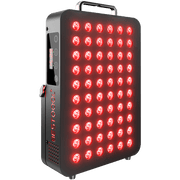









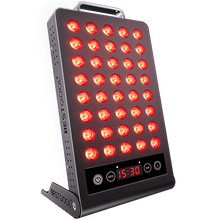
 Small
Small
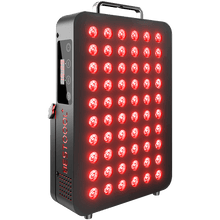
 Moderate
Moderate
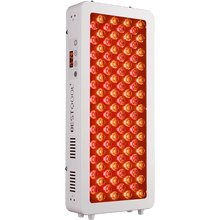
 Moderate
Moderate
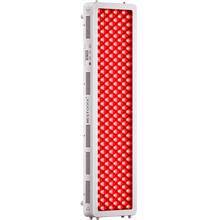
 Moderate
Moderate
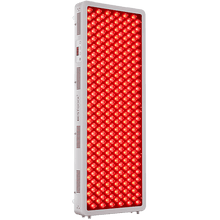
 Full
Full



